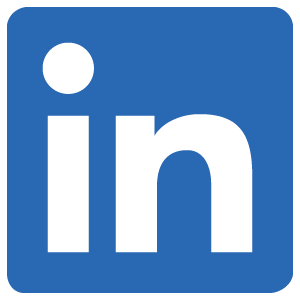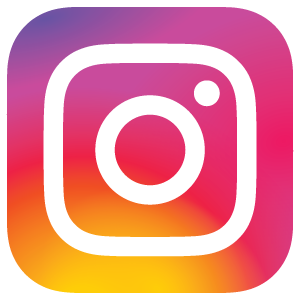Shapes are a fundamental part of how we see and understand the world around us. In design, they play a huge role in how people feel and what they think about a brand or product. This isn’t just a random idea; it’s rooted in how our brains are hard-wired to interpret visual information. Different shapes trigger different psychological responses, and understanding these can help you communicate exactly what you want to your audience.
Let’s break down some common shapes and what they generally communicate, along with some examples:
Circles and Ovals
Circles and ovals are all about completeness, unity, harmony, and eternity. They have no beginning or end, which gives them a soft, flowing feel. They often suggest a sense of community, love, and protection. Think about how a hug feels – comforting and enclosing. Circles can also represent femininity and softness. This is why circular shapes were so used during the art noveau period of art history.
From a neurological perspective, circles are less threatening than sharp angles. Our brains are drawn to curves and continuous lines. In nature, many things that are safe and nurturing are circular. The lack of corners makes them feel approachable and gentle.
Circles are great for brands that want to convey friendship, trust, and a sense of belonging. They are often used in logos for non-profits, community organizations, and brands that emphasize softness or natural products.
Example
A brand selling organic baby food might use circles in their logo and packaging to evoke a sense of warmth, safety, and natural purity.
Squares and Rectangles
Squares and rectangles are the most common shapes we see, and they typically represent stability, balance, order, and professionalism. They convey a sense of strength, reliability, and security. Because they have clear, defined boundaries, they tend to suggest a no-nonsense approach.
Our man-made environment is full of squares and rectangles – buildings, doors, windows, etc. This constant exposure has trained our brains to associate them with structure and reliability. Their straight lines and right angles give a sense of grounding and permanence.
These shapes are perfect for brands that want to communicate trustworthiness, efficiency, and a solid foundation. They are frequently used in corporate logos, financial institutions, and industries that emphasize logic and precision.
Example
A law firm or a construction company might use a square or rectangular logo to project an image of strength, reliability, and professionalism.
Triangles
Triangles are dynamic shapes that can suggest direction, power, movement, and progression. When pointing upwards, they can symbolize growth, aspiration, and stability (like a pyramid). When pointing downwards, they can indicate descent or warning. They can also represent hierarchy or a strong foundation.
The sharp angles of triangles generate a sense of tension, energy, and sometimes even motion. Our eyes naturally follow the direction of the point, which is why they are often used to guide attention. In nature, mountains and sharp peaks have a triangular form, often associated with power and grandeur.
Triangles are often used for brands that want to convey innovation, strength, leadership, or a forward-thinking approach. They are common in technology, sports, and religious symbolism.
Example
A sports apparel company might use a triangular logo to symbolize speed, dynamism, and peak performance.
Spirals and Curves
While circles are continuous curves, more complex curves and spirals evoke creativity, fluidity, grace, and naturalness. They can also suggest movement, growth, and transformation/evolution. They are often associated with softness and comfort.
Many elements in nature follow curved or spiral patterns – unfurling leaves, seashells, winding rivers, and even the human body’s contours. Our brains perceive these shapes as organic and pleasing. They are less rigid than straight lines and can evoke a sense of flow and rhythm.
These shapes are excellent for brands that want to convey elegance, artistry, natural beauty, or a sense of luxury and refinement. They are often seen in beauty products, artistic endeavors, and brands emphasizing fluidity or movement.
Example
A high-end spa or a natural skincare brand might incorporate elegant curves and flowing lines into their branding to convey tranquility, natural beauty, and a luxurious experience.
Hexagons
Hexagons are interesting because they combine aspects of both circles and triangles. They represent balance, intelligence, efficiency, and community. They are also incredibly strong and stable shapes, as seen in nature. Think about how perfectly honeycombs fit together.
The hexagon is a highly efficient shape for packing and strength. In nature, bees build hexagonal cells for their honeycombs because they are the most efficient way to store honey and maximize space. Our brains unconsciously pick up on this efficiency and order. They have a certain mathematical perfection that appeals to our sense of logic.
Hexagons are ideal for brands that want to convey structure, efficiency, interconnectedness, or a scientific/technological edge. They are often used in technology, engineering, and products related to nature.
Example
A beekeeper might use hexagons on their honey jars. This visually connects their product to the natural and efficient structure of a beehive, emphasizing the purity and natural origin of the honey.
Lines
Thin Lines
Lines, in general, are used to direct the eye, define boundaries, create patterns, suggest movement, and even convey emotions. They are the scaffolding upon which shapes are built, and their characteristics—direction, curvature, and especially thickness—carry a lot of psychological weight.
Thin lines generally convey delicacy, elegance, precision, and fragility. They can feel airy, light, and modern. Because they take up less visual space, they can also suggest subtlety, sophistication, and minimalism. While it’s true that extreme thinness can sometimes verge on feeling weak or easily broken, in most contexts, thin lines are associated with refinement.
Our brains associate thinness with lightness and less physical mass. Think of a delicate piece of jewelry or a finely drawn illustration – their thin lines suggest intricacy and care. In a visual sense, less “weight” means less presence, leading to a feeling of airiness or even vulnerability. However, this “fragility” isn’t necessarily negative; it can be interpreted as graceful and understated. Neurologically, thin lines require a bit more focus to discern, which can make them feel more artistic or carefully crafted.
Thin lines are excellent for brands that want to convey sophistication, luxury, precision, or a subtle aesthetic. They are commonly found in high-end fashion, minimalist design, elegant stationery, and artistic endeavors where a light touch is desired.
Example
A luxury perfume brand might use thin, elegant lines in its logo and packaging to suggest delicacy, refinement, and a premium, sophisticated product. Think of a delicate script font or a subtle border.
Thick Lines
Thick lines, on the other hand, communicate strength, stability, boldness, and assertiveness. They demand attention and feel grounded, reliable, and durable. They can also suggest importance, confidence, and a more direct, impactful message.
Just as thinness implies lightness, thickness implies weight and solidity. Our brains instinctively associate thick lines with physical robustness, like a strong wall or a sturdy pillar. They feel more substantial and less likely to break. This evokes a sense of security and reliability. The increased visual “weight” of a thick line makes it stand out, giving it a commanding presence that signals importance.
Thick lines are ideal for brands that want to project trustworthiness, power, durability, or a bold statement. They are often used in industries that emphasize strength, such as construction, automotive, or sports brands, as well as in designs that need to grab attention and convey a strong message.
Example
A rugged outdoor gear company would likely use thick, bold lines in its’ branding to convey durability, strength, and the ability to withstand harsh conditions. Similarly, a bank might use thick lines to imply security and trustworthiness.
In Summary
By understanding how these basic shapes influence perception, designers can strategically choose elements that resonate with their target audience and effectively communicate the brand’s core values and message. This information is not only helpful for designers, but also for business owners who wish to have a better idea for what they want their audience to expect from the brand. It’s not just about making something look pretty; it’s about using specific shapes [and other elements] to communicate with intention and power.


